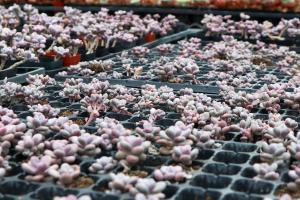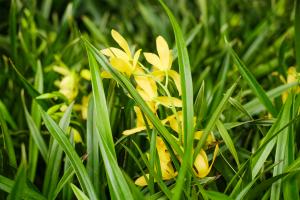Introduction
Arborvitae trees, also known as Thuja trees, are a popular choice for landscaping due to their ability to provide privacy and their attractive appearance. However, planting these trees requires careful consideration of the timing. In this article, we will discuss when is the best time to plant arborvitae trees.
Springtime Planting
Many people choose to plant arborvitae trees in the springtime, usually between March and May. This is because the soil begins to warm up during this period, promoting healthy root growth. It is also the season when saplings are most readily available for purchase. However, it is important to note that planting too early in the spring can be harmful to the trees. If temperatures are still freezing or fluctuating wildly, the trees may not survive.
Fall Planting
Another option to consider is fall planting. This is particularly suitable for regions with harsh winters, as it allows the trees more time to establish their roots before the cold weather sets in. Planting in the fall, between September and November, ensures that the trees can take advantage of the cooler weather and adequate moisture to establish themselves before the arrival of winter. Additionally, nurseries may offer discounts on saplings during this season.
Winter Planting
While it may seem counterintuitive to plant trees during the colder months of the year, arborvitae trees can also be successfully planted in the winter. This is usually done in regions with mild winters, where the ground does not freeze. Some specialists recommend planting in late winter, around mid-February, when the trees are still dormant and have not yet started to bud. This allows the roots to start forming before the trees begin to grow foliage, which can be a strain on their resources.
Summer Planting
Summer planting should generally be avoided, as the heat and dry weather can stress the saplings and make it more difficult for them to establish roots. However, if you must plant in the summer, it is important to take extra care to keep the trees well-watered and protected from exposure to direct sunlight. It may also be necessary to provide shade for the trees during the hottest parts of the day.
Conclusion
Choosing the best time to plant arborvitae trees depends on several factors, including the climate, weather conditions, and availability of saplings. Whether you choose to plant in the spring, fall, winter, or summer, it is important to prepare the soil carefully, provide adequate water, and monitor the trees for signs of stress. With proper care, your arborvitae trees can thrive and provide beauty, privacy, and shade for many years to come.

 how many times do yo...
how many times do yo... how many planted tre...
how many planted tre... how many pine trees ...
how many pine trees ... how many pecan trees...
how many pecan trees... how many plants comp...
how many plants comp... how many plants can ...
how many plants can ... how many plants and ...
how many plants and ... how many pepper plan...
how many pepper plan...
































